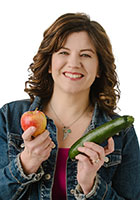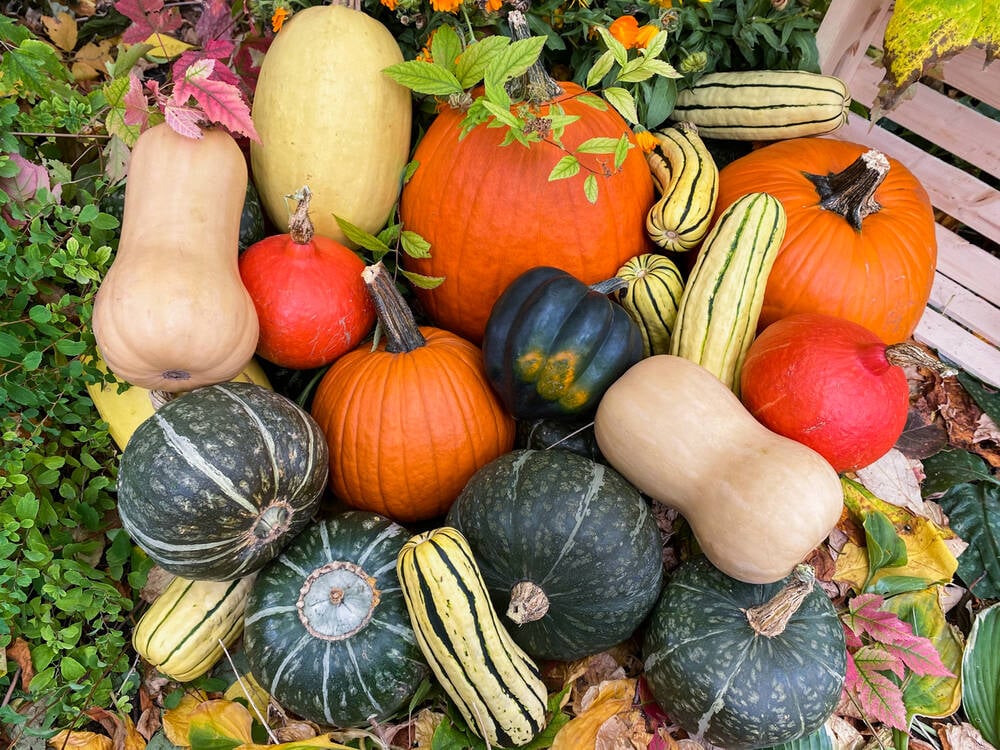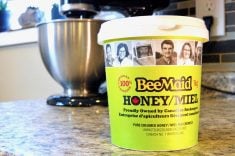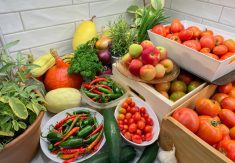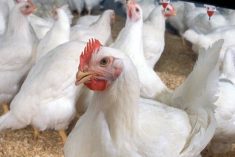If your only experience buying or growing pumpkins is for jack-‘o-lanterns, you’re missing out on a nutrient-packed, delicious option to add colour to the fall and winter menu.
Smaller pumpkins and winter squash like butternut, kabocha, delicata and acorn are ideal for cooking. These seasonal favourites are perfect for creating hearty, cozy dishes when the weather turns cold.
Winter squash and pumpkin are also nutritious. They’re excellent sources of fibre, potassium and vitamins A and C. Their bright orange color is a sign of high beta-carotene content, an antioxidant that supports healthy skin, vision and immune function.
Read Also

Ag Days Gives Back 2026 focuses on fire response
Manitoba Ag Days charitable program, Ag Days Gives Back, returns for 2026 with a new wave of rural community support in Manitoba and southeast Saskatchewan
It’s important to differentiate carving pumpkins from the ones you put on your table. The big field pumpkins used for Halloween decor are bred and grown for size and durability rather than taste. While safe to eat, their flesh tends to be watery, stringy and bland, though their seeds are great for roasting and snacking.
Don’t eat that post-Halloween jack-‘o-lantern. Once carved and exposed to the elements, the pumpkin is no longer safe due to bacterial growth.
For eating, look for smaller pumpkins labelled as pie pumpkins or sugar pumpkins. These varieties are sweeter and denser, making them perfect for soups, curries, pies, beverages and desserts.
Other winter squash varieties like butternut, kabocha, spaghetti, delicata and acorn offer rich, unique flavours and textures that can elevate your fall cooking.
Here’s a quick summary of these varieties:
• Butternut squash: With its sweet, nutty flavor, butternut squash is versatile and great for soups, risottos, baked goods or roasting.
• Kabocha squash: Often compared to sweet potatoes, kabocha has a rich, starchy flesh that’s excellent for roasting, soups or baking.
• Spaghetti squash: Known for its long yellow strands that look like spaghetti, it pairs well with pasta sauces.
• Delicata squash: This small squash has a thin, edible skin and sweet, creamy flesh. It’s perfect for roasting as a side dish or using on top of salads. One squash is perfect for two to three servings.
• Acorn squash: This small, nutty flavoured squash is more fibrous and less sweet than other squash. Its shape is perfect for filling with grains, meats or vegetables.

How to cook with winter squash and pie pumpkins
These squashes are delicious and incredibly versatile. Here are some easy ways to incorporate them into fall and winter meals:
• Roasting: One of the easiest and most flavourful ways to prepare squash is by roasting. Simply toss cubed squash with olive oil, salt and pepper and roast at 375-400 F (190-200 C) for 30-45 minutes. Serve the cubes as a side dish or on top of a hearty salad.
• Soups: Butternut, kabocha and pie pumpkins make excellent bases for creamy soups. Roast the squash in halves or quarters, scrape out the flesh, blend with broth, onions, garlic and a touch of cream for a cozy, warming dish.
• Stuffed squash: Acorn or delicata squash can be halved and stuffed with savory mixtures like quinoa, sausage or roasted vegetables. This makes for a filling and visually appealing meal.
• Pies and baked goods: Pie pumpkins, butternut and kabocha squash can easily be pureed for pies, muffins and bread. Their naturally sweet flesh pairs well with fall spices like cinnamon, cloves and nutmeg.
Ready to start cooking? Here are some recipes to get you started.
Squash puree
Use this technique for pie pumpkins, butternut, hubbard or kabocha squash to make puree suitable for soups, curries or baking. Makes three to four cups of puree
Ingredients
- 3-4 pounds of winter squash or pie pumpkin
Directions
- Wash outside of squash. For easy cutting, pierce the rind with a fork or knife and microwave for three to five minutes, rotating twice.
- Cut in half lengthwise and scoop out stringy bits and seeds. Save the seeds for roasting if desired.
- Place halves cut side down on a greased baking dish or a pan lined with parchment paper or a silicone mat.
- Bake at 375 F (190 C) for 45 minutes to an hour, or until flesh is fork tender.
- Scoop out cooked flesh and strain to remove excess moisture if necessary.
- Puree until smooth.
Source: www.gettystewart.com
Pumpkin scones
Use your pre-made puree to whip up these delicious scones. Makes eight scones

Ingredients
Scones:
- 2 cups all purpose flour
- 2 tbsp ground flaxseed
- 1 tbsp baking powder
- 1/4 tsp baking soda
- 1/4 tsp salt
- 1/4 cup brown sugar
- 1 tsp pumpkin spice (cinnamon, nutmeg, cloves, mixed to taste)
- 1-2 tbsp orange zest
- 6 tbsp cold butter diced
- 1 egg
- 1/2 cup squash or pumpkin puree
- 1/4 cup cream or milk
- 1 tbsp orange concentrate
Glaze:
- 1 cup icing sugar
- 1 tbsp orange concentrate
- 1/2 tsp cinnamon
- 1-2 tbsp water, as needed
- 2 tbsp pumpkin seeds, crushed and hulled
Directions
- Preheat oven to 400 F (204 C). Lightly grease baking sheet or line with parchment paper.
- In large bowl, mix flour, flax seed, baking powder, baking soda, salt, brown sugar, pumpkin spice and orange zest.
- Using pastry cutter, cut in butter until well distributed to form small crumbs.
- In separate small bowl, mix egg, squash puree, cream and orange juice concentrate.
- Pour wet ingredients into dry ingredients and stir until dough starts to come together.
- Turn dough and crumbs onto a lightly floured surface and use hands to gently work the dough to form a ball. If dough is too dry, add an extra splash of milk.
- Flatten dough into a circle about nine inches in diameter and an inch and a half high. Cut into eight wedges. Place on baking sheet, leaving space between each scone.
- Bake for 14-16 minutes until scones turn golden.
- Remove from oven and place on cooling rack.
- Make glaze. In small bowl, mix together icing sugar, orange concentrate, pumpkin spice and a tablespoon of water. Stir and add more water if needed for icing to drizzle off spoon.
- Drizzle over cooled scones.
- Sprinkle each with crushed seeds.
- Let rest briefly to let glaze set before serving.
Source: www.gettystewart.com
Roasted butternut salad bowl
This is a delicious full meal salad that’s endlessly customizable. Experiment with rice or quinoa instead of wheat berries, lettuce or spinach instead of kale and kabocha or delicata instead of butternut squash. If quantities aren’t labelled below, use as much or as little as desired.
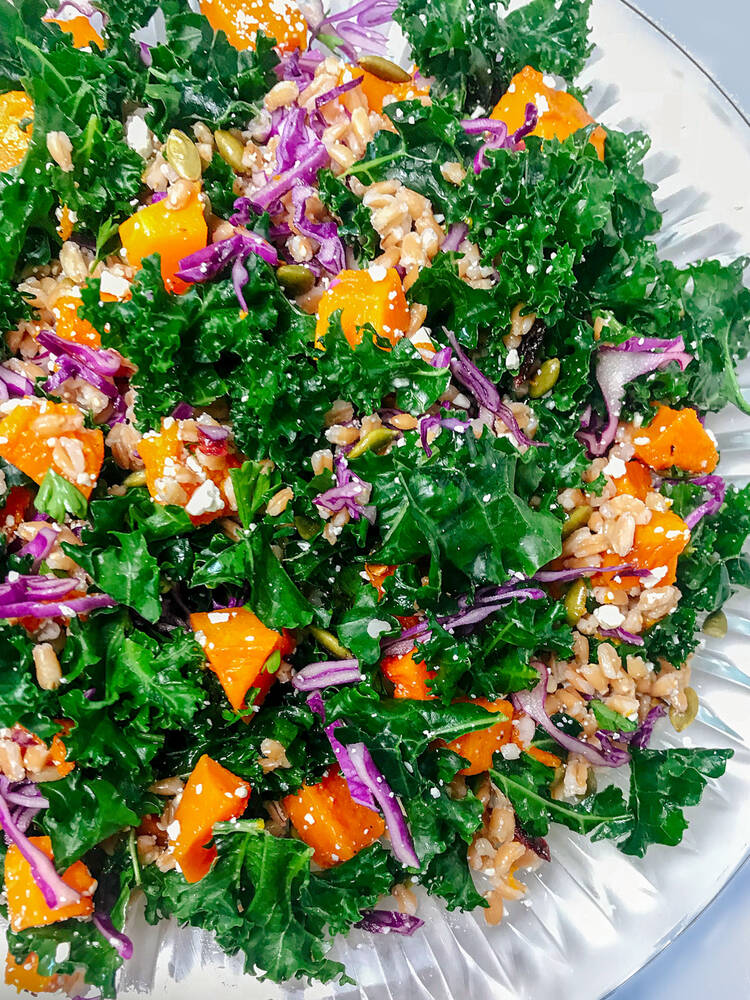
Makes two to three servings
Ingredients
- 1/2 cup wheat berries
- Butternut squash, cubed
- Kale
- Red cabbage, shredded thinly
- White kidney beans or cannellini
- Green onion, chopped
- 1 tsp olive oil
- 1/2 cup pumpkin seeds
- 1 clove garlic
- 1 – 2 tbsp maple syrup
- 2 tbsp olive oil
- 1 tbsp white wine vinegar
- Juice of half a lemon
- water (for desired dressing consistency)
- Pinch of salt and black pepper
Instructions
- Rinse wheat berries under water to ensure they are clean.
- Bring 1 1/4 cup water to boil on the stove. Add rinsed wheat berries to the boiling water and stir. Once water starts to boil again, turn the heat to low, cover and simmer for 45 minutes to an hour. You know the wheat berries are done when they are soft.
- While wheat berries are cooking, toss the butternut squash with olive oil and roast in the oven for 20 minutes at 350 F (180 C), or until cooked through.
- Massage a teaspoon of olive oil into the kale. This helps soften it so it’s not so tough.
- Once wheat berries and squash are ready, assemble the remaining salad ingredients into a salad bowl (shredded cabbage, white kidney beans, kale and green onion). Add as much or as little of each ingredient as you wish.
- For the dressing: toast pumpkin seeds in a non-stick pan over low heat for 10 – 12 minutes until they become fragrant. In a food processor, blend cooled pumpkin seeds, garlic, maple syrup, olive oil, vinegar, lemon juice and a splash of water. Add more water and blend until desired consistency is reached. Season as desired with salt and black pepper.
Source: www.nitasharda.com

